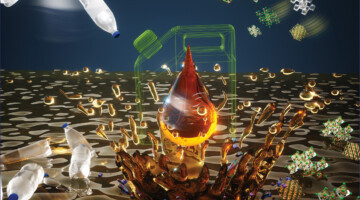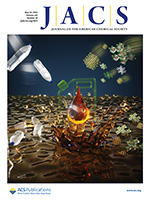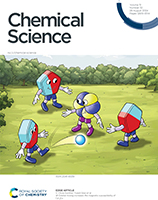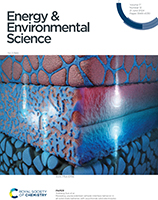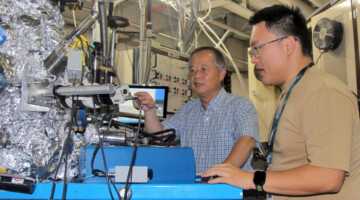Researchers found a way to turn single-use plastics (e.g., grocery bags and packaging) into useful liquid fuels, like components of gasoline or diesel, without needing high heat, rare metals, or added chemicals. The work presents a promising pathway to address the global plastic waste crisis, with both environmental and economic advantages. Read more »
ALS Work Using XAS
In x-ray absorption spectroscopy (XAS), the incident x-ray energy is tuned over a range that will excite core-level electrons. Sharp increases in absorption occur at specific energies, characteristic of the absorbing element. The resulting spectra probe the elemental composition as well as the chemical and electronic structure of the material.
Polyethylene Upcycling to Liquid Alkanes in Molten Salts under Neat and External Hydrogen Source-Free Conditions
Researchers found a way to turn single-use plastics (e.g., grocery bags and packaging) into useful liquid fuels, like components of gasoline or diesel, without needing high heat, rare metals, or added chemicals. The work presents a promising pathway to address the global plastic waste crisis, with both environmental and economic advantages. Read more »
Mind-Blowing Materials: Mimicking Neurons for Faster Computing
Researchers used x-ray absorption spectroscopy and resonant inelastic x-ray scattering at the ALS to uncover the atomic-level mechanism of conductance switching for a neuromorphic material that has the potential for energy-efficient computing. Read more »
Understanding the Role of Manganese in Fuel Production Catalysts
Using specialized equipment at the Advanced Light Source (ALS), including a custom-built reaction cell, researchers uncovered the role of manganese in cobalt manganese oxide catalysts used for fuel production. Read more »![]()
![]()
Nanoconfinement of High Hydrogen-to-Metal Ratio Lanthanum Hydrides in Functionalized Carbon Hosts
Metal hydrides with a high hydrogen content are important for materials-based hydrogen storage and high-temperature superconductivity. Nanoconfinement of metal hydrides in porous hosts is a promising strategy to tune the thermodynamic stability and control the hydrogen-to-metal ratio. X-ray absorption and photoelectron spectroscopy provided detailed information about the local chemical environment of LaHx species within carbon hosts. Read more »
4f-Orbital Mixing Increases the Magnetic Susceptibility of Cp’3Eu
The ability to harness the 4f-orbital anisotropies and magnetic susceptibilities of lanthanide elements is key to their application in molecular magnetism, including as molecular qubits and single-molecule magnets. Here, 4f orbital mixing and its impact on the magnetic susceptibility of a trivalent Eu organometallic complex was analyzed experimentally. Read more »
Tuning the Spin Transition and Carrier Type in Rare-Earth Cobaltates via Compositional Complexity
This work demonstrates that tunable disorder in a crystal can be quite useful: compositional site disorder was used to modify oxide semiconductors by changing the carrier type, improving crystallinity and tuning a spin transition. Applications include electrothermal thresholding devices such as radio frequency limiters. Read more »
Revealing unprecedented cathode interface behavior in all-solid-state batteries with oxychloride solid electrolytes
This research provides crucial insights into the innovative design of high-performance all-solid-state batteries (ASSLBs) based on the promising lithium tantalum oxychloride (LTOC) solid electrolytes. Read more »
Optical Properties of Individual Tar Balls in the Free Troposphere
Tar balls are found in biomass-burning smoke, and their sunlight-absorption properties are highly uncertain. This study investigates the optical properties of individual tar balls in the free troposphere to better understand their influence on climate. Read more »
HyMARC Aims to Hit Targets for Hydrogen Storage Using X-Ray Science
Understanding how materials absorb and release hydrogen is the focus of the Hydrogen Materials Advanced Research Consortium (HyMARC). At the ALS, the HyMARC Approved Program was recently renewed, underscoring the key role that soft x-ray techniques have played in addressing the challenges of hydrogen storage. Read more »
- 1
- 2
- 3
- …
- 10
- Next Page »
